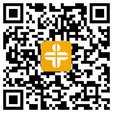Writing The Nursing Process Definition
A systematic method of providing nursing care. It provides a framework for planning and implementing nursing care.
Components 1. Assessment (ends with the formulation of a nursing diagnosis)
2. Planning
3. Implementation
4. Evaluation
Assessment Definition:
The process of gathering, verifying and communicating data about a patient. Data is gathered from a variety of sources and is the basis for actions and decisions.
Data Collection
1. Begins upon admission
2. Is a continual action throughout each phase of the nursing process
3. Data is classified as either objective or subjective
Objective Data
Factual data observed by the nurse. No conclusions or interpretations are made.
Examples:
B/P 100/62
Voided 200cc dark amber colored urine
Subjective Data
Information given verbally by the patient.
Examples:
"I itch all over."
"My stomach aches."
"I'm afraid of going to surgery tomorrow."
Methods of Collecting Data
1. Observation
2. Interview
a. Formal
b. Informa
c. Examination
Analysis and Interpretation of Data
1. Continually update and revise
2. Cluster data
3. Identify nursing diagnoses
Nursing Diagnosis A statement of an actual or potential response to a health problem that the nurse is competent and licensed to treat.
Actual: a situation that exists in the here and now.
- alteration in comfort
- ineffective breathing pattern
- impaired skin integrity
Potential: a situation which may cause difficulty in the future.
Examples:
- high risk for injury
- high risk for sleep pattern disturbance
- high risk for impaired skin integrity
Nursing Diagnosis Statement Contains two parts:
1. The statement of the patient problem
2. The contributing factors or probable causes of the problem - the etiology.
The two parts are joined by the words "related to"
Examples:
1. Ineffective breathing pattern (problem) related to chest pain (etiology)。
2. High risk for injury (problem) related to poor vision and decreased mobility (etiology)。
3. Alteration in nutrition (problem) related to nausea (etiology)。
Things to remember:
1. Only one nursing diagnosis per patient problem.
2. Each nursing diagnosis can have more than one etiology.
3. The nursing diagnosis is not a medical diagnosis - avoid using a medical diagnosis as part of the etiology.
4. Nursing diagnoses identify health problems and enable a plan of care to be developed to achieve a maximal level of wellness.
5. Use the NANDA list to help you formulate your nursing diagnosis.
Planning The phase of the nursing process in which you develop a plan of care and determine how you are going to solve, lessen or minimize the effects of the patient's problems.
There are 4 steps in this phase.
Step 1: Setting Priorities
1. Determine which problem poses the greatest threat to the patient's well-being.
- This becomes
- Continue to prioritize in this way.
2. Find out which problems the patient feels are most important.
Step 2: Writing Goals
1. A goal is a specific and measurable objective designed to reflect the patient's highest level of wellness and independence in function.
2. The goal is derived from the first part of the nursing diagnosis statement.
3. There are 2 categories of goals:
a. Short term - can be met fairly quickly (hours or days)
b. Long term - cover a longer time span
Guidelines for Goal Writing
1. Write goals in observable or measurable terms.
2. Write goals in terms of patient outcomes not nursing actions.
3. Keep goals short and specific.
4. Designate a time for achievement of the goal.
Examples of Goals
The patient will be free of infection throughout hospitalization.
The patient's lungs will remain clear postoperatively.
The patient's skin will be healed by 1/31.
Step 3: Developing the Expected Outcomes
Expected Outcomes define when a patient goal has been met and assist in evaluating the extent to which the nursing diagnosis has been resolved.
They are stated in observable or measurable terms.
Functions:
1. Provide a direction for nursing activities.
2. Indicate what should occur during the time span indicated in the goal.
3. Used to evaluate the effectiveness of the nursing interventions.
Example
Goal: The patient's lungs will remain clear postoperatively.
Expected Outcomes:
- the sputum will remain white.
- the patient will remain afebrile.
- the lungs will be clear to auscultation.
Step 4: Planning Nursing Actions
Nursing Actions are those things the nurse plans to do to help the patient achieve a goal.
Nursing Actions are derived from the etiology of the nursing diagnosis.
Guidelines for selecting nursing actions
1. Be sure the actions focus on the etiology of the nursing diagnosis.
2. Must be safe for the patient.
3. Must be congruent with other therapies.
4. Should be based on principles of nursing and disciplines related to nursing.
5. Must be based on appropriate rationale.
6. Each nursing diagnosis should have its own set of nursing actions.
7. Choose actions most likely to develop the behavior in the goal.
8. Must be realistic.
9. Use the patient as a source for choosing nursing actions.
Types of Nursing Actions
1. Dependent
- a nursing action based on the instruction of another professional
2. Independent
- requires no supervision or direction from others
3. Interdependent
- actions carried out by the nurse in collaboration with another health care professional
Questions Nursing Actions Should Answer:
1. What is the action?
2. When should the action be implemented?
3. How should the action be performed?
4. Who should be involved in carrying out the action?
Implementation Phase 1. Validating and documenting care.
2. Giving nursing care.
3. Continuing data collection.
Evaluation Phase 1. Evaluate goal achievement:
a. evaluate only the patient's ability to perform the behavior in the goal - don't evaluate the nursing actions.
2. Three alternatives:
a. goal met
b. goal partially met
c. goal not met
3. Include a statement of where the patient is now in terms of the expected outcomes.
4. When the goal is partially met or not met, then the care plan must be reassessed.
5. Possible outcomes:
- priorities may change and problems may have to be dealt with.
- new data may indicate there is a new problem to be dealt with.
- the goal may be met and the problem no longer exists.
- the goal may be met, but the problem still exists. May require changing goal, expected outcomes and nursing actions.
- if the goal was not met, the nurse needs to correct the unsuccessful plan.
Critical Thinking Definition: an attitude and a reasoning process involving intellectual skills - a purposeful mental activity in which ideas are produced and evaluated and judgments are made.
Characteristics of Critical Thinking
1. Conceptualization
2. Rational and Reasonable
3. Reflective
4. An attitude of inquiry
5. Autonomous Thinking
6. Creative Thinking
7. Fair Thinking
8. Deciding what to believe or do










 扫一扫关注
扫一扫关注
 扫一扫立即下载
扫一扫立即下载